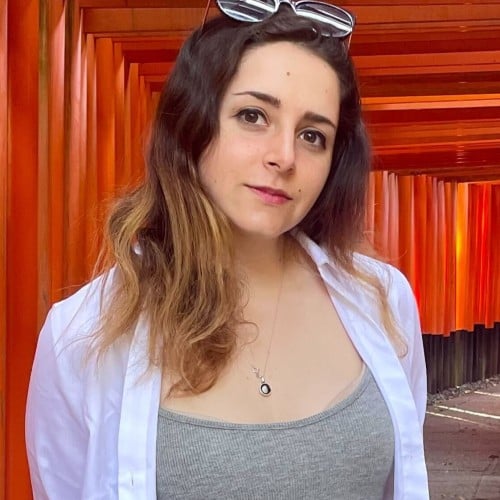
Bridging the gap: how translator Gigi Chang introduced the beloved ‘Condor Trilogy’ Chinese fantasy novels to the Western world
- Beloved wuxia series by Louis Cha Leung-yung, better known as Jin Yong, is being translated into English to reach a more international audience
- Every week, Talking Points gives you a worksheet to practise your reading comprehension with exercises about the story we’ve written
 Gigi Chang Ching, one of the translators of the “Condor Trilogy”. Photo: Xiaomei Chen
Gigi Chang Ching, one of the translators of the “Condor Trilogy”. Photo: Xiaomei ChenFrom epic martial arts battles to intricate military strategy, Hongkongers have long been enthralled by the lore and magic of the Condor Trilogy by Louis Cha Leung-yung, better known by his pen name Jin Yong.
More than 60 years after the release of the first novel, its world of adventure and shocking twists was introduced to a global audience in 2020, thanks, in part, to Hongkonger Gigi Chang Ching, who helped translate the stories into English.
Though she is now immersed in literature as an adult, Chang, 40, admitted that she gravitated to her screens during her youth. She initially encountered the captivating narrative of Condor Heroes through televised adaptations.
“I grew up with the television shows because they were everywhere,” she said. “I knew how to sing all the theme tunes.”
New opportunities
Although Chang “was not a bookish child”, the allure of Cha’s world drew her in. She instantly fell in love with the stories after reading the trilogy as a kid.
The original trilogy consists of The Legend of the Condor Heroes, The Return of the Condor Heroes and Heaven Sword & Dragon Sabre.
The English translation splits each book into four volumes; Chang worked on three volumes of the first book and is currently working on the second volume of The Return of the Condor Heroes.
Revisiting beloved Hong Kong comic strip Old Master Q
After graduating with a Bachelor of Arts from the University College of London in Britain, Chang was invited to translate Chinese plays for the Royal Shakespeare Company and the Royal Court Theatre. It was while working for the Victoria and Albert Museum in London that she met Anna Holmwood, also a translator.
Holmwood had recommended an English version of the Condor Heroes series to Western publishers. Realising she could not translate the novels on her own, Holmwood recruited Chang to work alongside her, and they started tackling the books together in 2015.
Learning the history
Cha based many of the series’ events and characters on historical figures from the Song and Jin Empires nearly 1,000 years ago, so to “feel the length and the breadth” of the setting, Chang travelled through China to see them in person.
Meanwhile, Chang and Holmwood attempted to fill in knowledge gaps for international readers who may not know much about Chinese history with an appendix at the end of each book.
“There are explanations about certain concepts or people that we think could benefit from more introduction ... like when real historical figures get mentioned,” she explained.
Since Condor Heroes also carved the landscape for the wuxia genre, Chang learned martial arts, including tai chi and Wudang, “to help understand the movements and fights”.
Still, she struggled to translate the fight scenes, saying the descriptions often felt the same.
“If you read an English language novel, you usually don’t have more than one or two of those things,” Chang explained. “Whereas in a martial arts novel, the whole point of the book is to fight. And it’s the fights that push the story along.”
Why this group believes digitising VHS tapes is key to preserving Hong Kong history
Tough decisions
Besides the fighting, the book also had a lot of “internal kung fu”, in which characters fight using their minds. While this worked well for the genre in its original language, Chang had to push the limits to enrapture an English-speaking audience.
“The energy flowing between them is very sophisticated, but it gets harder and harder to write,” she said. “How many ways can you talk about energy flow?”
Translators must make tough choices, and some critics questioned Chang’s and Holmwood’s decision not to translate all the characters’ names, but “we considered things like ease of reading and the meanings of the names,” Chang explained.
Thus, when the meaning of a character’s name was important, the duo relied on semantic translation – for example, they translated Bao Xi-ruo to Charity Bao to preserve the significance of the name. But when the meaning was less important, they stuck with the pinyin, such as with the character Guo Jing.
Despite these roadblocks, Chang is bringing Cha’s world to a wider audience. Fans of the series can see Chang at the Hong Kong International Literary Festival, where she will speak on two panels on March 9 – one day before what would have been Cha’s 100th birthday.
To test your understanding of this story, download our printable worksheet or answer the questions in the quiz below.
